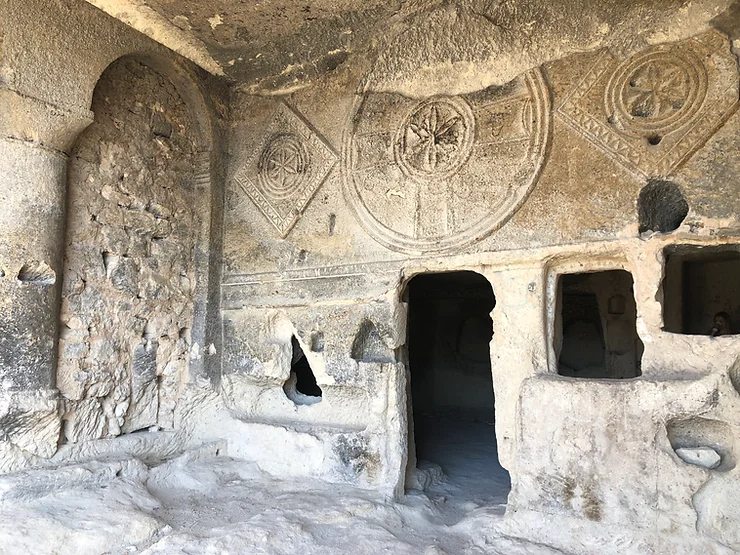Imagine soaring over the otherworldly landscape of Cappadocia, with its fairy chimneys and mysterious valleys, while riding a majestic horse. This isn’t a scene from a fantasy novel, but a real-life adventure that’s waiting for you in the heart of Turkey. Fairy chimneys are the iconic rock formations that give Cappadocia its distinctive appearance. These cone-shaped pillars are formed from the erosion of soft volcanic rock, and they come in a variety of shapes and sizes.
The chimneys are often topped with hats of harder rock that have resisted the erosion process. Ready to learn more about how they were formed?
It all starts with the geological history of the region. Cappadocia is part of a volcanic plateau, and it was formed by several volcanic eruptions that occurred millions of years ago!
The volcanic activity left behind soft layers of tuff, which is a type of rock that’s easy to carve and sculpt. Over time, wind and water eroded the softer rock, leaving behind the pillars we call fairy chimneys. Isn’t that fascinating?
Beginning of the life in Cappadocia
So, let’s talk about how the frescoes in these churches were created. The artists used natural pigments made from minerals like iron oxide and calcium carbonate. They mixed these pigments with water and egg yolk to create paint, which they then applied to the walls and ceilings with brushes made from animal hair. Many of the frescoes are still in excellent condition today, even after hundreds of years. Isn’t that amazing?
One of the most famous of these churches – the Church of St. John the Baptist. This church was built in the 11th century and it’s filled with some of the most beautiful frescoes in Cappadocia. The frescoes depict scenes from the life of John the Baptist, as well as images of the Virgin Mary and Jesus. The colors are still vibrant and the details are intricate, making this church a true masterpiece of Byzantine art. Have you ever seen photos of this church before?

It’s like stepping into a time machine and seeing how people lived and worshipped hundreds of years ago. And the frescoes are just the beginning – the entire church is carved out of the rock, with rooms and tunnels that go deep into the mountain.
It’s like a little city within a rock!
Let’s back to our main point: horses of Cappadocia. The horses here was known as “Cappadocian horses” and they were a unique breed with a long and interesting history.
These horses were originally bred by the ancient Hittites, and they’re known for their stamina, intelligence, and gentle temperaments.
Equine Photography in Cappadocia
Today, Cappadocia is a popular destination for photographers and equestrians alike. The landscape is dramatic and the horses are magnificent, so there are endless photo opportunities. Imagine standing in a valley of fairy chimneys, with a beautiful Anatolian or Arabian horse standing in front of you against the backdrop of a breathtaking sunrise with colourful hundreds of hot air balloon. Doesn’t that sound like a photographer’s dream?
Imagine waking up early in the morning and going out into the valleys, with the sun just beginning to rise.
The light is golden and soft, and the horses are full of energy. You watch them as they run and play, and you try to capture their beauty and grace with your camera. You breathe in the fresh air and take in the stunning landscape around you. And the balloons are waving you 🙂
Some of the most popular places to photograph horses in Cappadocia are the Rose and Swords Valleys. These valleys is known for its spectacular rock formations and the beautiful wildflowers that bloom in the spring. As the sun rises, the rocks glow pink and the horses run through the valley, creating a magical scene.
Doesn’t that sound like the perfect setting for a photo shoot?
Cappadocia is a photographer’s paradise, with endless opportunities to capture stunning images of horses in a unique and beautiful landscape. Whether you’re a professional photographer or just an amateur with a camera, you’ll find something special here.





